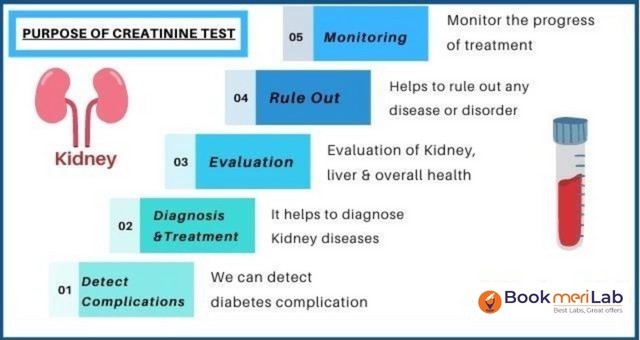Before administering an antibiotic that can cause nephrotoxicity, which laboratory value is most important for the practical nurse (PN) to review?
White blood cell count (WBC).
Serum creatinine.
Hemoglobin and Hematocrit.
Serum calcium
The Correct Answer is B
The correct answer is choice B, Serum creatinine. Choice A rationale:
The white blood cell count (WBC) is an important parameter for assessing the body's immune response to infections. While it can provide valuable information about the presence of an infection, it is not directly related to nephrotoxicity. Therefore, it is not the most important laboratory value to review before administering an antibiotic that can cause nephrotoxicity.
Choice B rationale:

Serum creatinine is a crucial laboratory value to assess kidney function. It is a waste product that is filtered by the kidneys, and its level in the blood is a reliable indicator of kidney function. If the serum creatinine level is elevated, it suggests impaired kidney function, which can be a warning sign of nephrotoxicity. Reviewing the serum creatinine level before administering nephrotoxic antibiotics is essential to ensure that the client's kidneys are functioning adequately and to avoid potential harm.
Choice C rationale:
Hemoglobin and hematocrit are indicators of the client's red blood cell count and blood's oxygen-carrying capacity. While these values can provide information about the client's overall health status, they are not directly related to nephrotoxicity. Therefore, they are not the most important laboratory values to review in this particular scenario.
Choice D rationale:
Serum calcium levels are essential for assessing bone health, nerve function, and muscle contractions. However, they are not directly related to nephrotoxicity, and reviewing serum calcium levels alone would not provide sufficient information about kidney function. Hence, it is not the most critical value to review before administering nephrotoxic antibiotics
Nursing Test Bank
Naxlex Comprehensive Predictor Exams
Related Questions
Correct Answer is B
Explanation
The correct answer is choiceB. Remove the warm compress.
Choice A rationale:
Turning the lights on in the room would likely exacerbate the resident’s photophobia (sensitivity to light), causing more discomfort.Photophobia is a common symptom of bacterial conjunctivitis, and keeping the room dim can help alleviate this discomfort.
Choice B rationale:
Removing the warm compress is the correct action. Warm compresses can sometimes be used to relieve symptoms of conjunctivitis, but they are generally more appropriate for viral or allergic conjunctivitis.In the case of bacterial conjunctivitis, warm compresses can potentially worsen the infection by providing a warm, moist environment that promotes bacterial growth.Instead, a cool compress is often recommended to reduce inflammation and discomfort.
Choice C rationale:
Elevating the head of the bed can help reduce swelling and promote drainage, but it is not directly related to the immediate relief of eye pain and photophobia in bacterial conjunctivitis.This action might be more relevant for conditions involving fluid retention or respiratory issues.
Choice D rationale:
Offering an oral analgesic could help manage the resident’s pain, but it does not address the underlying issue of the warm compress potentially worsening the bacterial infection.Pain management is important, but it should be combined with appropriate measures to treat the infection and alleviate symptoms.
Correct Answer is D
Explanation
The correct answer is Choice D.
Choice A rationale: Enrolling the UAP in a hospital education class on conducting safe client care is not an immediate response and does not address the current situation. It may be a longer-term solution for ongoing education.
Choice B rationale: Praising the UAP for performing oral hygiene and encouraging family participation does not address the immediate safety concern of the procedure being performed correctly.
Choice C rationale: Telling the UAP to continue because the unconscious client is positioned safely is incorrect. The client should not be in a flat side-lying position as it increases the risk of aspiration during oral hygiene.
Choice D rationale: Stopping the procedure and telling the UAP to place the client in a Fowler's position is correct. The Fowler's position helps maintain an open airway and reduces the risk of aspiration during oral hygiene in an unconscious client.
Whether you are a student looking to ace your exams or a practicing nurse seeking to enhance your expertise , our nursing education contents will empower you with the confidence and competence to make a difference in the lives of patients and become a respected leader in the healthcare field.
Visit Naxlex, invest in your future and unlock endless possibilities with our unparalleled nursing education contents today
Report Wrong Answer on the Current Question
Do you disagree with the answer? If yes, what is your expected answer? Explain.
Kindly be descriptive with the issue you are facing.
